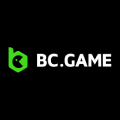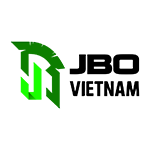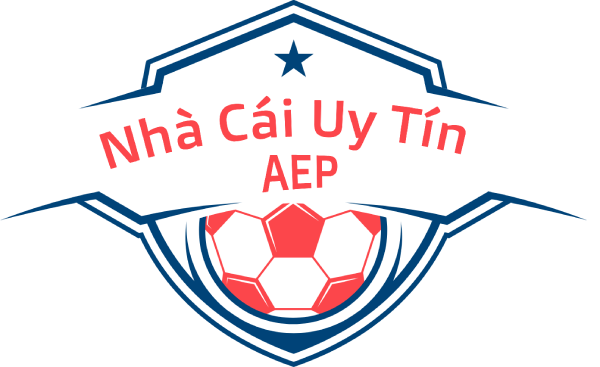Top 10 Nhà Cái Uy Tín AEP 2025 – Đăng Ký Là Có Quà, Cược Là Có Tiền!
Bạn đang tìm một trang cá độ bóng đá uy tín để bắt đầu cá cược? Đừng lo! Tụi mình đã tổng hợp lại top 10 nhà cái uy tín nhất Việt Nam 2025. Đây là những cái tên bảo chứng cho trải nghiệm cược tuyệt vời – từ nhà cái tặng tiền cực khủng đến giao diện siêu mượt, kèo nhà cái thơm, và rút tiền siêu tốc. Hãy chọn ngay cho mình một trang cá cược uy tín, đăng ký tài khoản và nhận ưu đãi khủng ngay hôm nay!
1 | BC.Game "Nhà cái uy tín "Nhà cái uy tín | 💥 Tặng 120% nạp đầu lên đến 12.851.210 VNĐ + 100 FS 💥 Nạp lần 2 nhận 100% đến 7.710.726 VNĐ + 100 FS 💥 Nạp lần 3 siêu khủng 150% đến 12.851.210 VNĐ + 100 FS 💥 Nạp lần 4 nhận 100% tiếp 7.710.726 VNĐ + 100 FS | CƯỢC NGAY:LINK 1LINK 2 |
2 | BJ88 Trang Cá Độ Bóng Đá Trang Cá Độ Bóng Đá | 💥 Hoàn tiền 100% AFC Bournemouth – quá đã! 💥 Tặng liền 30 áo đấu có chữ ký Bologna 💥 Ưu đãi thể thao hấp dẫn tới 8% 💥 Nạp lại Ngoại Hạng Anh nhận 18% | CƯỢC NGAY:LINK 1LINK 2 |
3 | E2BET Nhà Cái Tặng Tiền Nhà Cái Tặng Tiền | 💥 Hoàn thua thể thao mỗi ngày 6,88% 💥 Hoàn trả đều tay 1% 💥 Thưởng 28% khi nạp lại slot & bắn cá 💥 Giới thiệu bạn bè nhận tới 10.000.000 VNĐ | CƯỢC NGAY:LINK 1LINK 2 |
4 | WE88 Nha cai uy tin Nha cai uy tin | 💥 Tặng 100% nạp đầu thể thao & eSports – tới 2 triệu 💥 Thưởng casino 50% tới 2 triệu 💥 Thưởng nổ hũ + bắn cá 100% 💥 Thưởng xổ số lên đến 2 triệu | CƯỢC NGAY:LINK 1LINK 2 |
5 | M88 Nhà Cái Tặng Tiền Trải Nghiệm Nhà Cái Tặng Tiền Trải Nghiệm | 💥 Thưởng nạp đầu casino 188% – tới 3,888 VNĐ 💥 Nạp đầu thể thao 125% – tới 4,288 VNĐ 💥 Hoàn trả slot, bắn cá, thể thao không giới hạn 💥 Tặng cược miễn phí 188 VNĐ tại Keno & xổ số | CƯỢC NGAY:LINK 1LINK 2 |
6 | W88 Top Nhà Cái Uy Tín Top Nhà Cái Uy Tín | 💥 Thưởng nạp đầu 100% tới 6.150.000 VNĐ 💥 Gửi tiền lần đầu trên mobile tặng 50 VNĐ 💥 Vòng quay miễn phí: 18 spin 💥 Gửi tiền ngày vàng nhận thưởng liền tay | CƯỢC NGAY:LINK 1LINK 2 |
7 | 12Play Trang Cá Cược Uy Tín Trang Cá Cược Uy Tín | 💥 Thành viên mới thưởng 100% 💥 Xác minh tài khoản tặng ngay 40K 💥 Hoàn trả không giới hạn 0,5% - 1% 💥 Cược miễn phí lên đến 3.888.888 VNĐ | CƯỢC NGAY:LINK 1LINK 2 |
8 | 12BET Nhà Cái Mới Nhà Cái Mới | 💥 Thưởng chào mừng thể thao 100% 💥 Huyền Vũ ưu đãi thể thao 12% mỗi ngày 💥 Hoàn trả SABA độc quyền 💥 Bảo hiểm cược xiên tới 6.000.000 VNĐ | CƯỢC NGAY:LINK 1LINK 2 |
9 | BK8 Trang Web Cá Cược Uy Tín Trang Web Cá Cược Uy Tín | 💥 Nạp đầu nhận ngay 100% 💥 Giới thiệu bạn bè: thêm 0.4% 💥 Thắng xâu mỗi tuần thêm 5% 💥 Hoàn trả 4% lên đến 28 triệu | CƯỢC NGAY:LINK 1LINK 2 |
10 | FUN88 Top 10 Nhà Cái Uy Tín Top 10 Nhà Cái Uy Tín | 💥 Tặng 100% khi đăng ký trò chơi – tối đa 2 triệu 💥 Thưởng thể thao/esports 100% – tới 6 triệu 💥 Bảo hiểm cược chung cuộc tới 10 triệu 💥 Trúng độc đắc Baccarat trị giá triệu đô! | CƯỢC NGAY:LINK 1LINK 2 |
11 | JBO Top Nhà Cái Top Nhà Cái | 💥 Tặng 100% đăng ký đá gà – tối đa 5 triệu 💥 Quà sinh nhật miễn phí 15 triệu 💥 Nạp lại mỗi ngày cho thể thao/esports 💥 Gửi tiền tại casino nhận 2 triệu/ngày | CƯỢC NGAY:LINK 1LINK 2 |
🟦 Thế nào là một nhà cái uy tín?
Một nhà cái uy tín không chỉ đơn thuần là một thương hiệu lớn mà còn phải:
- Có giấy phép hợp pháp quốc tế như Curacao, PAGCOR, hoặc Malta
- Minh bạch trong thanh toán, cược và trả thưởng
- Cung cấp khuyến mãi hấp dẫn, rõ ràng điều kiện
- Có hệ thống hỗ trợ người chơi 24/7 nhanh chóng, nhiều kênh
🟦 Vì sao cần chọn đúng nhà cái uy tín để mở tài khoản?
Khi chơi tại một trang nhà cái uy tín, bạn được:
- Bảo vệ thông tin và tài khoản bằng công nghệ bảo mật cao
- Đảm bảo không bị lừa đảo, chơi an toàn
- Tận hưởng khuyến mãi hoành tráng từ nạp đầu đến giới thiệu bạn bè
- Có nhiều lựa chọn đặt cược như thể thao, casino, slot, bắn cá…
🟦 Tiêu chí xếp hạng nhà cái
- ✅ Pháp lý rõ ràng: Có giấy phép hoạt động hợp pháp
- ✅ Giao diện chuẩn chỉnh: Tương thích mọi thiết bị
- ✅ Tỷ lệ cược & hoàn trả cao
- ✅ Khuyến mãi chất lượng và thường xuyên
- ✅ Hỗ trợ nhiều hình thức thanh toán tại Việt Nam
- ✅ Đội ngũ chăm sóc khách hàng 24/7 chuyên nghiệp
🟦 Top 10 Nhà Cái Uy Tín Đáng Chơi Năm 2025
Đây là danh sách 10 cái tên được cộng đồng cược thủ đánh giá cao nhất, cùng với những ưu đãi cực sốc khi đăng ký.
➡️ Xem bảng dưới đây để chọn ngay cho mình một nhà cái phù hợp nhất!
🟦 Giới thiệu 11 Nhà Cái (Phần sau bảng)
💎 BC.Game – Nền tảng cá cược crypto cực mượt
Thanh toán tiền điện tử hiện đại, giao diện màu tối ấn tượng.
Tặng đến 4 lần thưởng nạp với combo tiền mặt + 400 FS!
💎 BJ88 – Cá độ đỉnh cao, khuyến mãi đặc biệt
Hoàn tiền 100% cho AFC, tặng áo đấu xịn, nhiều ưu đãi thể thao mạnh.
💎 E2BET – Giao diện nhanh, hoàn trả đều
Khuyến mãi hàng ngày từ slot đến bắn cá.
Giới thiệu bạn bè là có quà tiền mặt.
💎 WE88 – Đầy đủ sản phẩm, thưởng toàn diện
Thưởng chào mừng lần nạp đầu tại casino, thể thao, xổ số, bắn cá.
💎 M88 – Lão đại nhà cái châu Á
Thưởng nạp casino tới 188%.
Cược Keno, thể thao, nhận hoàn trả không giới hạn.
💎 W88 – Quá quen mặt với cược thủ VN
Thưởng nạp đầu thể thao lên đến 6 triệu.
Có app riêng, chuyển tiền nhanh.
💎 12Play – Giao diện trẻ, đăng ký nhanh
Tặng ngay 40K khi xác minh. Thưởng thành viên mới lên tới 3,8 triệu.
💎 12BET – Bảo hiểm cược xiên, hoàn trả độc quyền
Thưởng thể thao, hoàn SABA, hỗ trợ tiếng Việt đầy đủ.
💎 BK8 – Trẻ trung, tỷ lệ tốt
Tặng 100% nạp đầu, hoàn trả 4% mỗi tuần.
Chơi càng lâu càng lời.
💎 FUN88 – Ưu đãi đa nền tảng
Tặng thưởng thể thao, casino, bảo hiểm cược lên đến 10 triệu.
Giao diện cực mượt.
💎 JBO – Esports và đá gà cực chất
Thưởng đăng ký lên đến 5 triệu.
Quà sinh nhật và hoàn tiền cực lớn mỗi ngày.
🟩 Kết luận
Bạn còn chần chừ gì nữa? Top nhà cái uy tín 2025 đang chờ bạn đăng ký, nhận tiền và bắt đầu hành trình cá cược rực lửa. 👉 Chọn cho mình tên đăng ký ấn tượng, tạo tài khoản, nhận thưởng ngay hôm nay!
